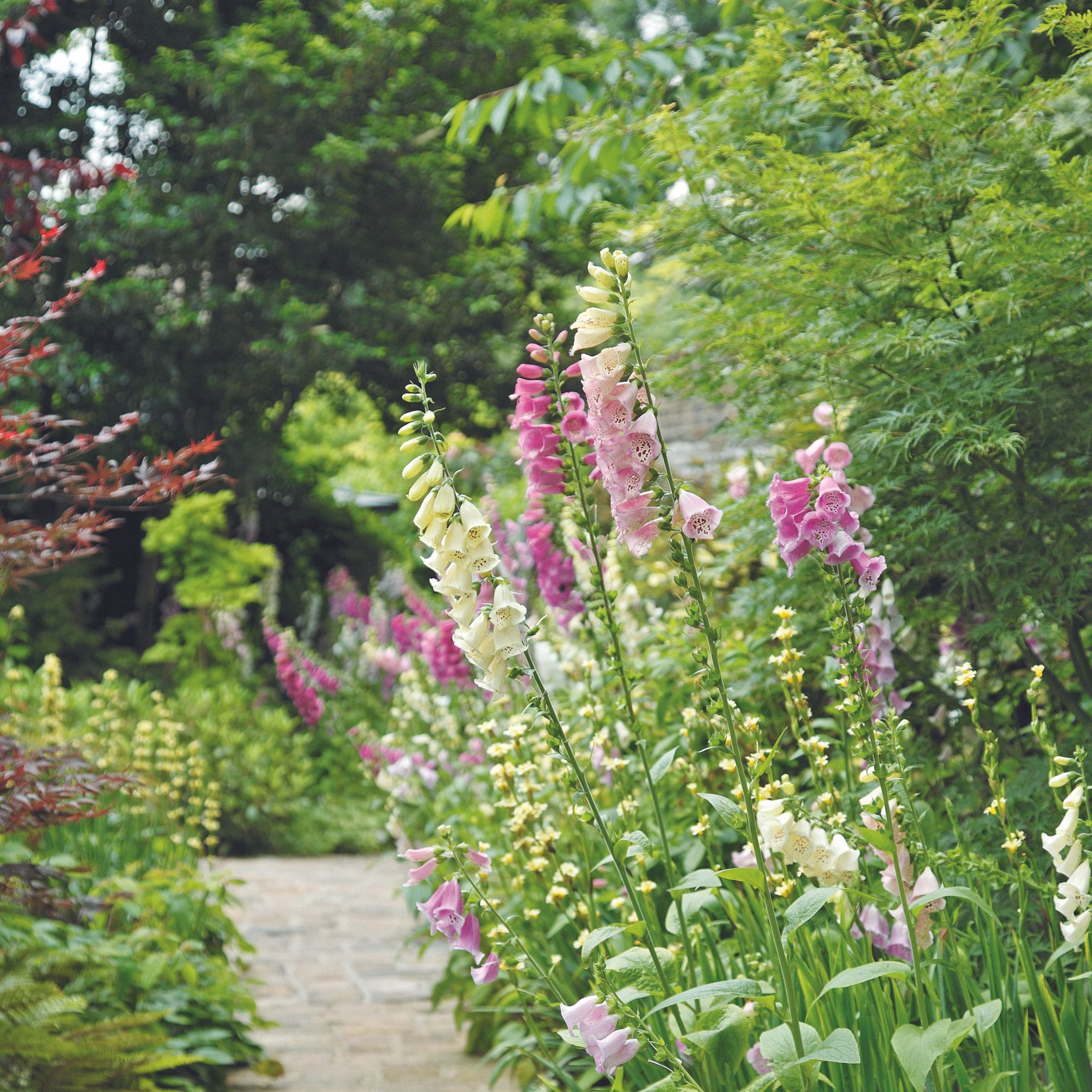
Throughout the summer, there is seemingly endless talk of deadheading, with guides on how to cut a range of flowers — but what about the plants you shouldn’t deadhead?
While tips on deadheading mistakes to avoid and various other tricks circulate the gardening community online and over the fence, it's important to consider the plants you should avoid deadheading, too.
There is a common misconception that all flowering plants benefit from deadheading, says David Denyer, gardening and floral expert at Eflorist. 'While it certainly encourages some flowers to reach a fuller bloom, others thrive best when left to their own natural processes.'
In fact, choosing not to deadhead certain plants ties in with various wildlife garden ideas.
'So, before you grab your shears, it’s important to know which plants don't need to be deadheaded.'
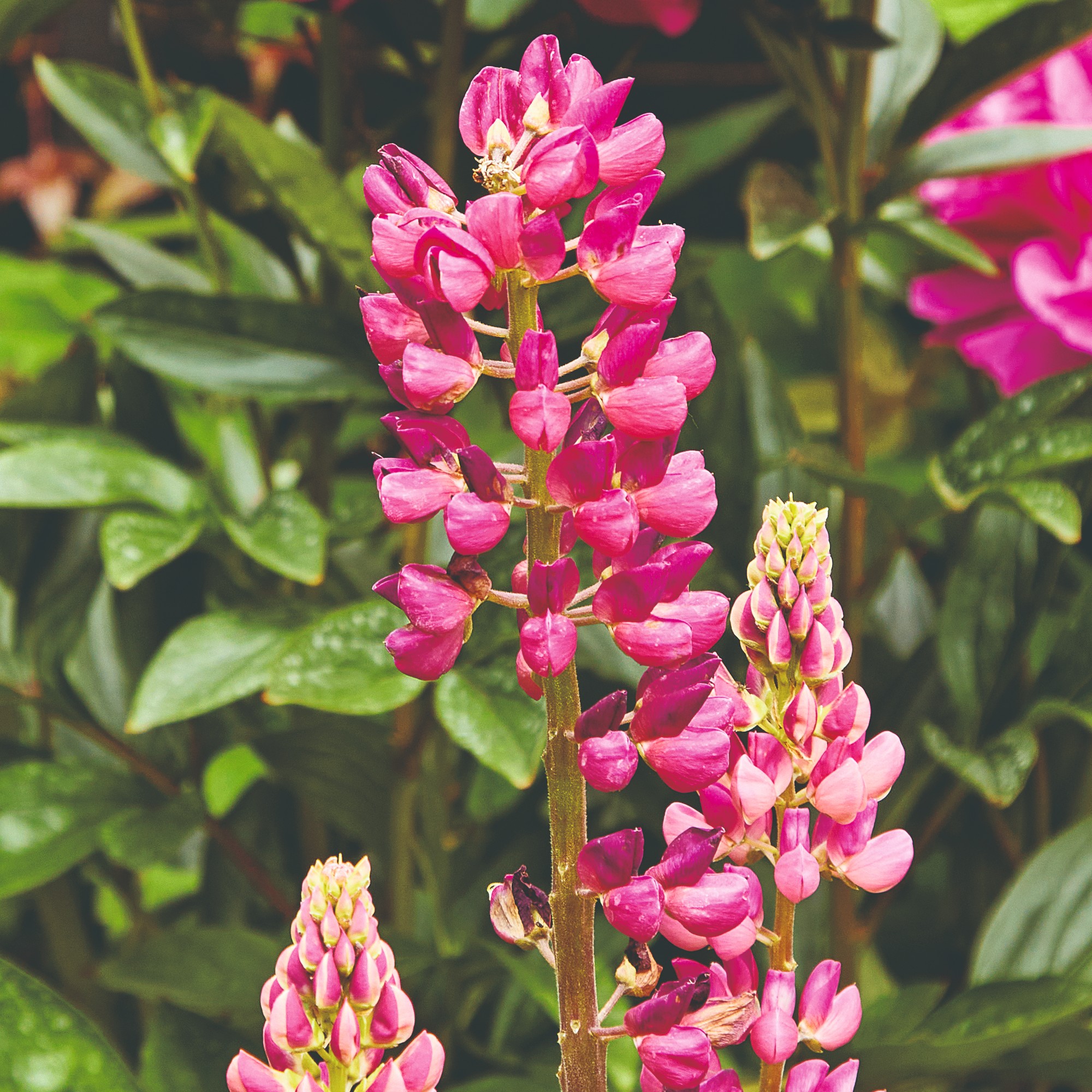
Plants you shouldn't deadhead
Knowing what not to deadhead is just as important as knowing which spent flowers you can remove.
That's because certain plants are more helpful when left alone, because of their crucial ability to self-seed and continue their lineage, as well as their production of attractive seedheads which appeal to us and wildlife.
But which plants shouldn't you deadhead? We've asked the experts what they've learned through their years of experience.
1. Foxgloves
Foxgloves were all the rage this year at the RHS Chelsea Flower Show. The good news is that these plants need very little maintenance, and leaving them alone can keep them in your garden year after year.
‘One of my favourite plants is the foxglove, or Digitalis,’ says Harriet Worsley of Worsley Design & Consultancy. ‘It’s a biennial, which means that it lasts two years, flowering in the second.’
‘It’s absolutely essential not to cut off the flowers, as they will form seedheads and drop, seeding beds for another two years. Otherwise, you’ll have no foxgloves in the garden.'
You don't need to know how to grow foxgloves from seed or plug plants if you're willing to leave the spent flowers be.
‘The clever thing to do is to plant Digitalis in two consecutive years so, in theory, you have beautiful foxgloves every year, seeding and rotating.’
2. The blanket flower
The blanket flower, or Gaillardia, is another example of a plant that should be left alone to self-seed for the next generation.
‘By allowing the blanket flower to go to seed, you ensure a continuous cycle of vibrant blooms year after year,' explains Georgina O’Grady, Managing Director at Evergreen Direct.
'Because the plant thrives on the reseeding of spent flowers, deadheading would be ill-advised.’
Blanket flowers are a great example of flower bed ideas that will help elevate your garden.

3. Aquilegia
Aquilegia, also known as columbine or granny’s bonnet, is another effective self-seeder.
‘Aquilegia are expert spreaders and seeders,’ says Harriet. ‘They do come back every year, but leave the seed heads on and you will find cheeky new planting popping up in surprising places.
‘For me, the surprise of seeing new plants arrive in odd places is what makes a garden feel exciting and alive, and so different from a more ordered interior space.’
Letting your garden self-seed freely embraces the spirit of chaos gardening, too.

4. Lupins
In some flowers, the stage after flowering is just as beautiful as the blooming period. Lupins are a great example of this.
‘The lupin (Lupinus) produces stunning seed pods after blooming, which does wonders for its aesthetic appeal while also providing food for wildlife,' says Georgina.
‘I recommend refraining from deadheading lupin flowers if you want to create a more natural and abundant garden display.’
Leaving lupins alone is a great way to create a wildlife-friendly garden.
5. Hydrangeas
Though deadheading is often recommended for hydrangeas to encourage reblooming, you can also leave the spent heads alone for a slightly different feature outdoors.
‘I use Hydrangea arborescens ‘Annabelle’ in many of my designs, says Harriet. 'It’s great to leave the fluffy flower heads on through the winter to add a bit of form and structure.'
‘They will have turned brown, but they provide structure and interest.’
Another fun idea is to dry hydrangeas to make the most out of your blooms.
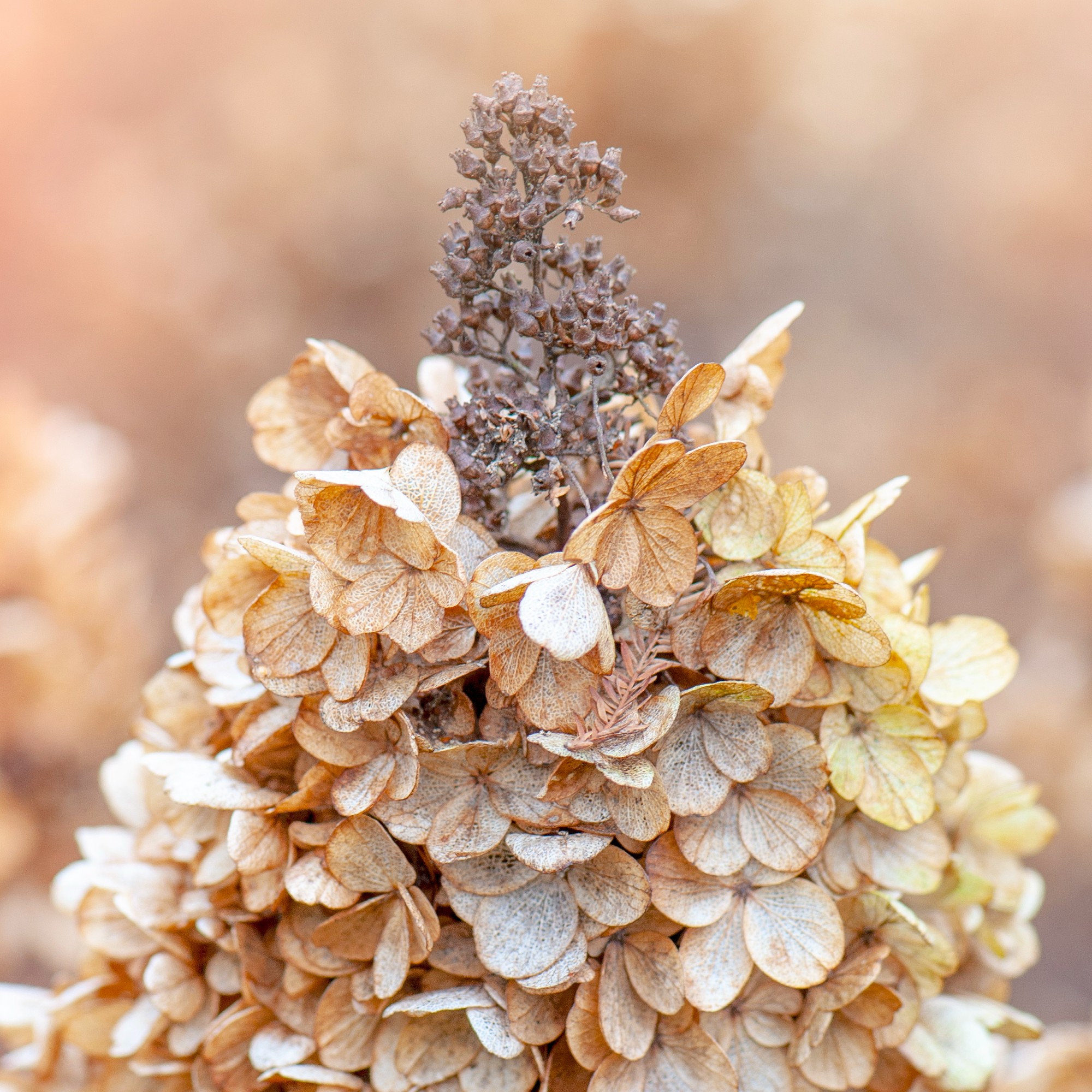
6. Sunflowers
Renowned for their hearts, sunflowers are perhaps one of the most obvious examples of perennial plants that produce attractive seedheads. But that isn't the only benefit of leaving them alone.
‘These plants add seasonal interest to your garden and provide food and habitat for birds and other wildlife,’ says David Denyer from Eflorist.
It’s an especially good idea to leave the seedheads be if you’re nearing the end of the growing season and there is little to no time left for new flowers to grow. If you're wondering how long sunflowers take to grow, consider skipping deadheading them throughout the year to ensure a continuous food source and retreat for wildlife.
Black-eyed Susans (Rudbeckia) and coneflowers (Echinacea) are two more plants that David recommends you should avoid deadheading due to their seedheads.
7. Globe thistles
Globe thistles (Echinops) are another plant with ornamental seedheads which require minimal attention.
‘While deadheading can extend their flowering period and manage self-seeding, it is often avoided because their attractive seed pods are an integral part of their charm and appeal,’ explains David.
Similarly, love-in-a-mist can be left alone to produce interesting seedheads.

8. Viburnum
Leaving this plant alone is a great way to feed local wildlife on a budget.
‘Plants that produce decorative and bird-friendly hips or berries such as viburnums should not be deadheaded if you seek to enjoy their colourful berry displays later in the season,’ says David.
‘These berries not only add visual appeal but also offer a nutritious snack for feathered friends.’
9. Asters
In some cases, plants simply aren’t suited to deadheading. ‘Some flowering plants, particularly those with delicate or intricate blooms, may not respond well to deadheading,’ David explains.
‘Aster is an example of this, where the process of deadheading can be challenging due to their flower structure or may disturb the plant's natural cycle.’
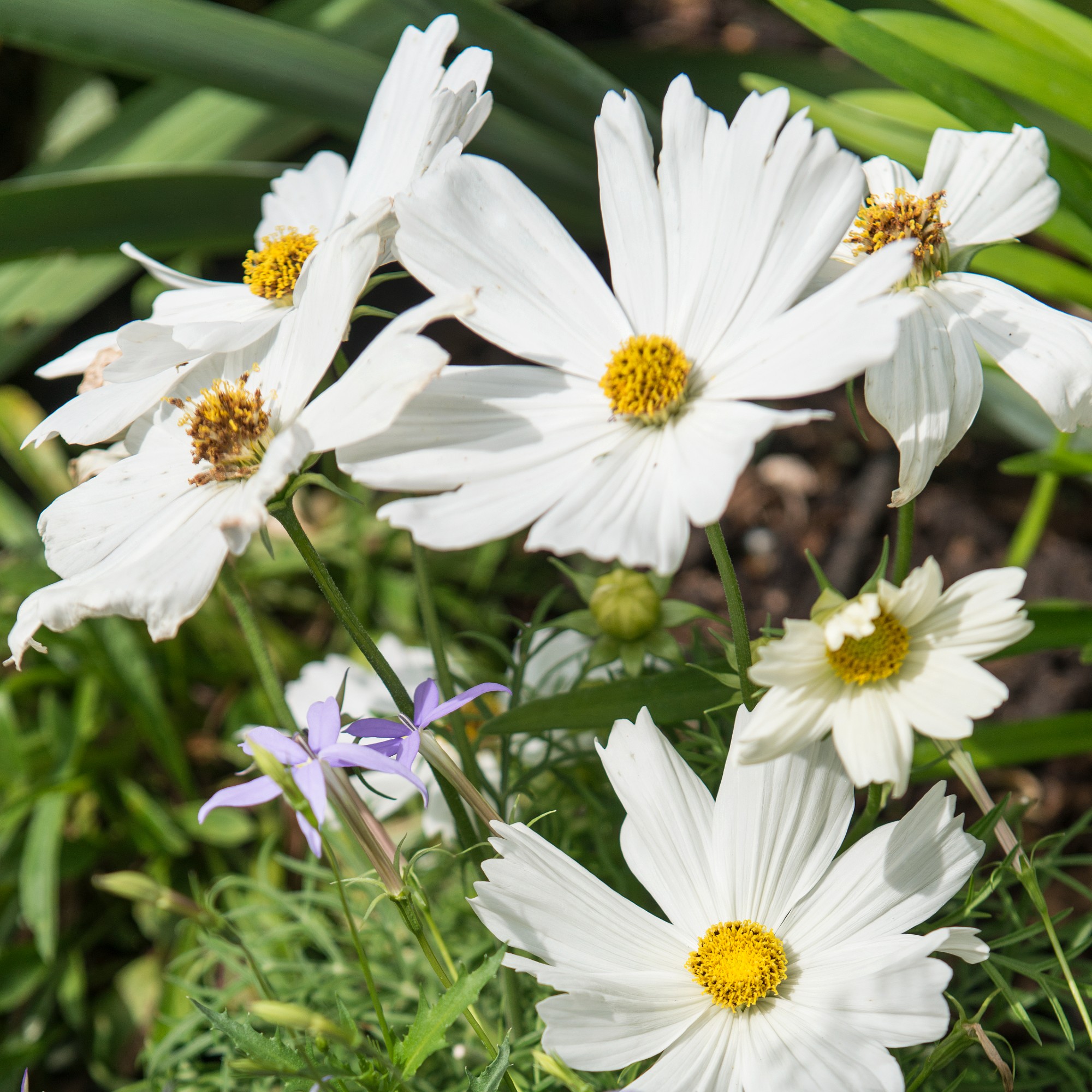
10. Roses — if you want the hips
You might be surprised to see roses on this list — common knowledge is that roses should be deadheaded, and for good reason: ‘Deadheading encourages repeat blooms on many rose varieties,’ says Ian Limmer, Nursery Manager at Peter Beales Roses. ‘But it also prevents the development of the rose hips that follow flowering.’
‘Rosa Scabrosa, for example, boasts not only beautiful crimson blooms tinged with violet but also produces a stunning display of immense orange-red hips in autumn. These hips add a pop of colour and interesting texture to the garden, especially after the flowers have faded.’
Leaving spent heads to form rose hips can also benefit wildlife. ‘Rose hips are a valuable food source for many birds throughout the winter months,’ says Ian. ‘Leaving the hips on Rosa moyesii ‘Geranium’ provides a vital source of sustenance when other food sources are scarce.’
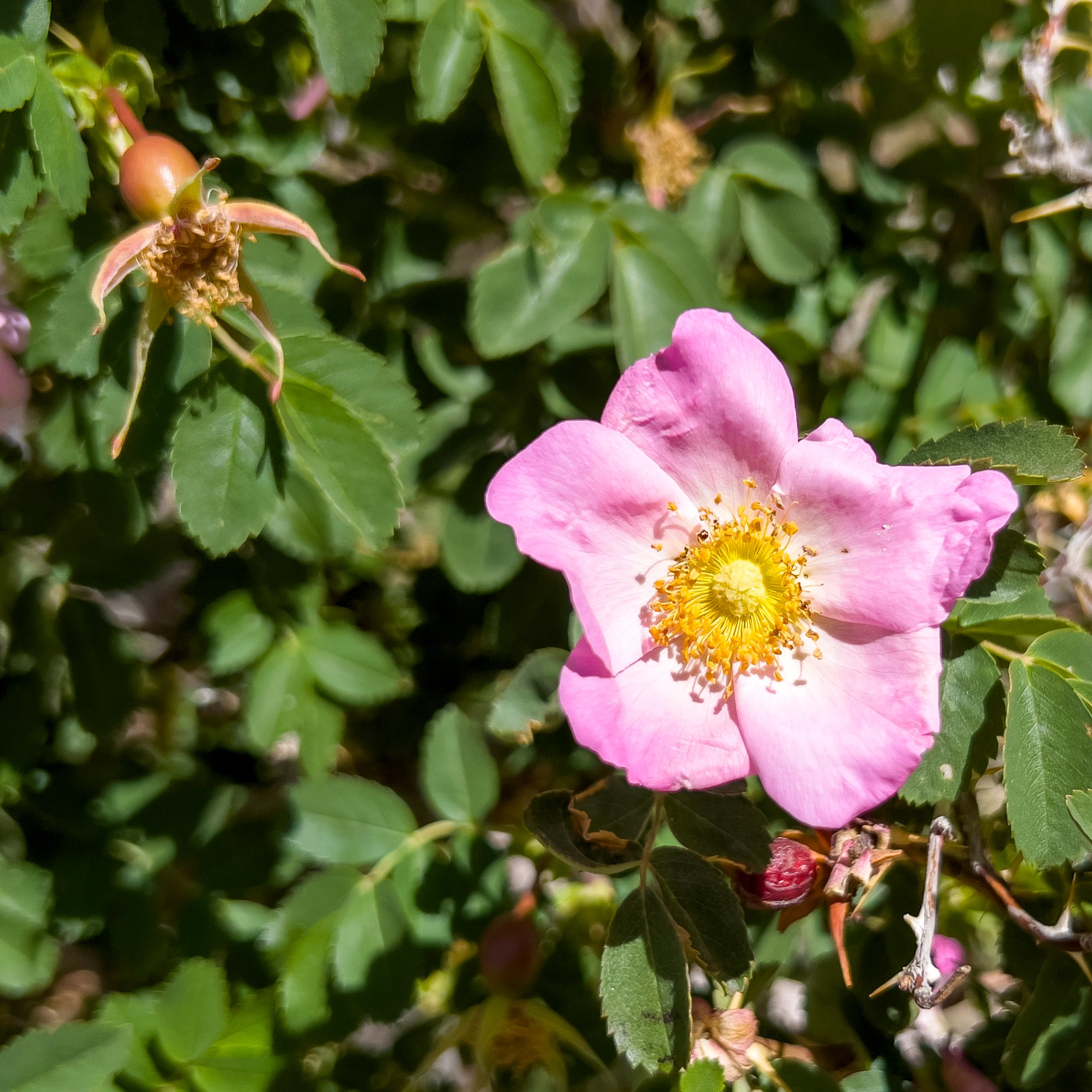
FAQs
What does deadheading mean?
'Deadheading is the process of removing spent flowers’, says David. ‘It is a widely embraced gardening technique cherished for its ability to promote continuous blooming and ensure optimal plant health.’
How can I keep my plants flowering for as long as possible?
When it comes to plants you shouldn't deadhead, there are lots of ways you can keep them in bloom for as long as possible. Often, that involves swapping the shears for some high-quality plant feed, and making sure you're watering them as often as needed.
Three feeds to try
Keep your roses blooming for longer with this super plant food. Enriched with horse manure, the pellets help to prevent disease and even encourage the growth of larger flowers.
This all-rounder from envii will provide your plants with vital marcro nutrients, improving their health and vitality. Its built-in measuring chamber makes it even easier to use.
This trusty plant food is ready to use and contains a growth stimulant rich in organic matter. You'll quickly see the results in healthier plants that last longer.
Now that you know which plants you shouldn't deadhead, you can cross them off your list of garden tasks. That spells good news for you and your local wildlife!







